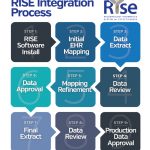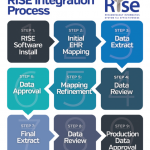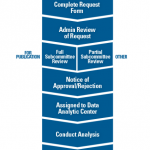The ACR reviews and updates measures in the Rheumatology Informatics System for Effectiveness (RISE) each year. The following outlines changes to existing measures and new measures added to RISE for the 2020 calendar year.
Changes to Existing Measures
ad goes here:advert-1
ADVERTISEMENT
SCROLL TO CONTINUE
- QPP 177: Rheumatoid Arthritis (RA): Periodic Assessment for Disease Activity
Measure description: Percentage of patients aged 18 years or older with a diagnosis of RA who have an assessment of disease activity at >50% of encounters of RA for each patient during the measurement year.
What changed: Patient activity scale (PAS) is no longer endorsed for assessment for RA disease activity. To meet this measure, use one of the following ACR-endorsed RA disease activity measurement tools: SDAI, CDAI, DAS-28, PAS-II or RAPID3. - QPP 178: Rheumatoid Arthritis (RA): Functional Status Assessment
Measure description: Percentage of patients aged 18 years and older with a diagnosis of RA for whom a functional status assessment was performed at least once within 12 months.
What changed: Acceptable tools for assessing functional status have been narrowed to one of the following ACR-endorsed functional status measurement tools: PROMIS PF10a, HAQ-II or MDHAQ. - QPP 180: Rheumatoid Arthritis (RA): Glucocorticoid Management
Measure description: Percentage of patients aged 18 years and older with a diagnosis of RA who have been assessed for glucocorticoid use and, for those on prolonged doses of prednisone >5 mg daily (or equivalent) with improvement or no change in disease activity, documentation of glucocorticoid management plan within 12 months.
What changed: The glucocorticoid dose threshold for prolonged use was reduced from prednisone >10 mg to >5 mg daily (or equivalent). - ACR14 (previously ACR7): Gout: Serum Urate Target
Measure description: Percentage of patients aged 18 or older with a diagnosis of gout treated with urate-lowering therapy (ULT) for at least 12 months, whose most recent serum urate result is less than 6.0 mg/dL.
What changed: The serum urate target was reduced from less than 6.8 mg/dL to less than 6.0 mg/dL.
New Measures in 2020
The new measures in RISE are meant offer our providers a wider breadth of rheumatology-specific measures to assess their quality of care. The new measures for 2020 expand the opportunity for rheumatologists to find measures meaningful to their practice and patients. The specifications for each of the new measures are available on the registry website.
- ACR9: Rheumatoid Arthritis Patients with Low Disease Activity or Remission
Measure description: The proportion of individuals with RA who have low disease activity or are in remission based on the last recorded disease activity score in the measurement year.
Measure type: Intermediate Outcome, High Priority - ACR10: Hepatitis B Safety Screening
Measure description: If a patient is newly initiating biologic or new synthetic disease-modifying antirheumatic drug (DMARD) therapy, the medical record should indicate appropriate screening for hepatitis B in the preceding 12-month period.Measure type: Process, High Priority - ACR11: Hydroxychloroquine Dosing
Measure description: If a patient is using hydroxychloroquine, the average daily dose should be <6.5 mg/kg.
Measure type: Process, High Priority - ACR12: Disease Activity Measurement for Patients with Psoriatic Arthritis
Measure description: If a patient has psoriatic arthritis (PsA), disease activity using a standardized measurement tool should be assessed at >50% of encounters for PsA.
Measure type: Process - ACR13: Tuberculosis Test Prior to First Course Biologic Therapy
Measure description: If a patient has been newly prescribed a biologic therapy, then the medical record should indicate TB testing in the preceding 12-month period.
Measure type: Process, High Priority
For questions or more details on these changes and new measures, email [email protected].


